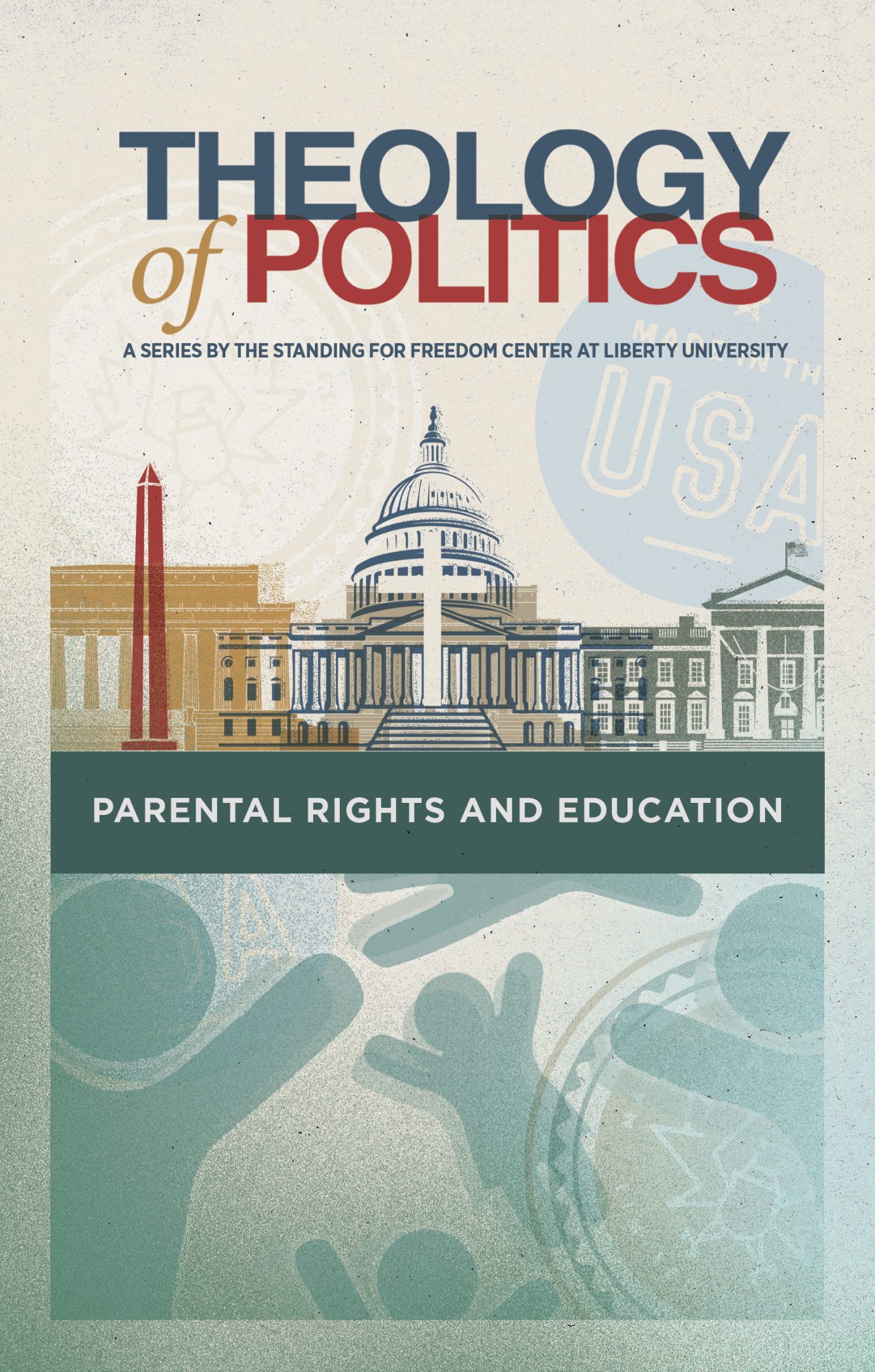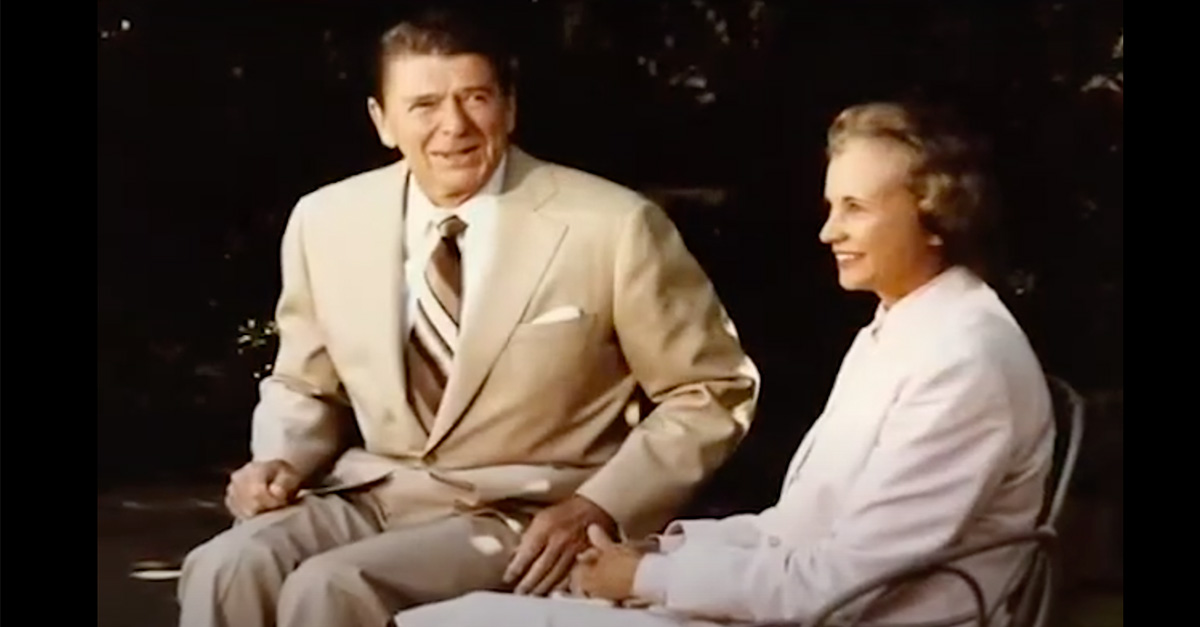


Get a free copy of Parental Rights & Education when you subscribe to our newsletter!

After making a campaign promise to do so, President Ronald Reagan puts the first woman, Sandra Day O’Connor, on the U.S. Supreme Court — a decision that continues to reverberate to this day.
On September 19, 1981, the U.S. Senate confirmed Sandra Day O’Connor to serve as the first female justice on the U.S. Supreme Court.
But was O’Connor, a 51-year-old judge on the Arizona Court of Appeals, really the best pick out of all potential candidates?
Or only the best of the four finalists — who just happened to all be female?
The latter count wasn’t a coincidence. During his presidential campaign, Reagan had promised to appoint a woman to the Supreme Court and he would get an opportunity to keep that pledge in his first year in office. His advisors had believed that getting the female vote would be critical to defeating President Jimmy Carter, but the decision to use what was effectively a quota to pick a member of the highest court in the land, thereby automatically excluding 50 percent of the population, rankled many.
Whether he needed the female vote to put him over the top — and whether Reagan’s commitment to pick a female justice actually inspired women to turn out in even greater numbers than men for the first time since the Suffrage movement and the passage of the 19th Amendment — can never be truly known. In the end, Reagan won in a landslide, with just six states and the District of Columbia voting for Carter.
Still, the new president showed himself to be a man of his word. Reagan’s selection of O’Connor for associate justice was seen as a major win by liberals and moderates, but especially feminists, who were gushingly positive and complimentary of Reagan’s decision.
Conservatives, by contrast, were less thrilled — though it had nothing to do with the fact that O’Connor was a woman. It was her record as an Arizona state legislator in which she had seemed to show support for abortion that really had them concerned.
Moral Majority leader and Liberty University Founder Jerry Falwell, Sr., had this to say about the nomination: “Either the president did not have sufficient information about Judge O’Connor’s background in social issues or he chose to ignore that information.”
O’Connor certainly had a solid resume and a compelling story. Born on March 26, 1930, she was the oldest of three siblings growing up on one of the largest cattle ranches in Arizona. Known as the Lazy B Ranch, the sprawling expanse covered 160,000 acres, providing grazing land for 2000 cattle and their offspring. The farmhouse was seven miles from the nearest road and had no running water and electricity when Sandra was born.
She soon learned to ride and rope and had a work ethic as strong as any paid ranch hand, but her father, Harry Day, had bigger ambitions for her. With no adequate educational opportunities in the sparsely populated area, he insisted that Sandra attend the private Radford School in El Paso, Texas, while living with her grandmother during the school year and returning to the ranch for the summer.
Harry, who inherited the farm after his own father’s death, had learned to manage and oversee the property as a young man while making trips from California. He soon realized that staff are not always trustworthy when unsupervised, so he gave up his dreams of attending Stanford University, moved to the farm permanently, and purchased some bulls from a farmer in El Paso.
Three months later, Harry married Ada Mae, the daughter of the rancher who sold him the cattle.
Harry and Ada Mae never left the Lazy B Ranch, but Sandra who soon fulfill her dad’s dream, enrolling at Stanford when she was just 16 years old.
She excelled academically and socially; she even dated and received a marriage proposal from then-classmate and future Supreme Court Justice William Rehnquist. Instead, Sandra chose to marry John Jay O’Connor III, a fellow editor of the Stanford Law Review.
Her intelligence and self-discipline was also evidenced by the fact that she completed her undergraduate degree in economics and obtained her law degree quicker than normal matriculation standards.
By the time O’Connor was nominated to the Supreme Court in 1981, she had already been a standard bearer for females in the male-dominated world of law and government. She was the first woman to oversee any state Senate chamber in America, that chamber being in Arizona, and later served as a state appellate judge.
Although Reagan was committed to nominating a woman, he did have other criteria: His choice needed to be conservative, pro-life, and a constitutional purist — rather than a judicial activist like those who had dominated the Supreme Court over the past three decades. In fact, it was this type of thinking that had underpinned the 1973 Roe v. Wade decision that “made every abortion restriction in the nation illegal in one fell swoop,” as the second female Justice Ruth Bader Ginsburg would describe it decades later, criticizing the ruling as “not the way the Court normally operates.”
O’Connor’s worldview, however, was hard to pin down. She was clearly a conservative, having worked on Barry Goldwater’s presidential campaign and served in elected office as a Republican. As a judge, she was known to be fair and wise, but as a legislator, she had mastered the fine art of dealmaking, often willing to compromise to get legislation passed.
This was of particular concern to conservatives as O’Connor, who claimed to be personally against abortion, had voted against some minor anti-abortion issues at the state level, though at least one of those votes had been attached as a rider to a seemingly unrelated infrastructure bill.
Several conservative organizations hoped that the most outspoken pro-life senator, Jesse Helms, R-N.C., would actively oppose her nomination. He did not. And so she completed her Judicial Committee testimony and was confirmed 99-0 by the Senate on September 19, 1981.
As a justice, O’Connor’s complex, nuanced way of thinking would become her legacy. She often voted with the conservative wing of the court, but over time she moderated her position and would soon be viewed as a critical swing vote whenever the Court seemed to split (including ironically enough, one that allowed affirmative action in student admissions).
Nowhere was this more evident, though, than on the issue of abortion; it was here that O’Connor, as Falwell and other pro-life evangelicals had feared, turned out to be especially squishy. In the 1989 case of Webster v. Reproductive Health Services, for example, O’Connor refused to join Rehnquist and three other justices to overturn Roe v. Wade and restore the issue back to the purview of the states; three years later, in the case of Planned Parenthood v. Casey, O’Connor was not only the swing vote in the 5-4 ruling that re-affirmed Roe but she actually co-wrote the majority opinion.
Three decades later, that decision, along with Roe, would be overturned and the responsibility for abortion finally returned to the states.
O’Connor retired in 2006 during President George W. Bush’s second term and was replaced by conservative Justice Samuel Alito. She died at the age of 93 on December 1, 2023 and her ashes were spread on the hill overlooking the Lazy B Ranch where her parents and husband were buried.

Ronald Reagan was an extraordinary president, but his promise to appoint a woman to the Supreme Court was a short-sighted misstep for which America is still paying a price.
For starters, it further politicized the judicial nomination process. It’s not that Reagan was wrong to nominate a woman for the job of associate justice; it’s that he tied his hands so that he could only choose from a limited pool of candidates.
Sandra Day O’Connor was certainly an impressive individual with strong experience in Arizona, but other than being a woman, she did not fulfill most of the other criteria Reagan had wanted for his choice of a Supreme Court justice.
As seen in her opinion in Casey, her views on abortion were “nuanced,” couching the underlying principle of “reproduction” in terms of “liberty” rather than “life.” Moreover, she did not have a strict originalist philosophy when it came to interpreting the Constitution. She has been described by Court watchers as “a real politician on the court,” who focused more on building consensus and making sure that “everyone walked away feeling like they got something” and who “wanted the Court’s decisions to be practical and help society—as distinct from decisionmaking that purports to come solely from the logic of the law, consequences be damned.”
Secondly, Reagan set a precedent in allowing identity politics to guide the selection of critical public leadership positions that should demand nothing less than the absolute best and brightest available.
Bill Clinton would later follow suit and make a campaign promise to pick the first woman to head up the Justice Department. Like Reagan, President Clinton kept his word, but the confirmation process turned into a disaster that was mocked as “Nannygate.”
His top pick, corporate lawyer Zoe Baird, was found to have hired illegal immigrants from Peru to watch over her children and failed to pay employment taxes for them; a second choice, U.S. District Court Judge Kimba Wood, had also once employed an illegal alien to provide childcare.
Despite desperately needing to get his attorney general in place, Clinton tripled-down on his campaign promise, this time choosing the childless, unmarried Janet Reno to avoid another installment of Nannygate.
Reno was unanimously confirmed on March 11, 1993. Her tenure would be marked by numerous controversies, the most disturbing of which was her greenlighting the FBI’s raid and siege of the Waco compound of the Branch Davidian cult, the end result being the deaths of nearly 100 people, including 25 children.
Most recently, Joe Biden promised that if he had an opportunity to nominate a Supreme Court justice he would choose a black woman, vetting only candidates from that limited pool before putting U.S. District Court Judge Ketanji Brown Jackson on the bench in early 2022.
In the end, Reagan’s promise to appoint a female justice and the subsequent nomination of O’Connor helped propel the idea that what matters most is a person’s physical and immutable characteristics, like gender or skin color. And rather than being recognized as simply a different form of sexism and racism, this belief has become normalized and celebrated in today’s society as affirmative action and Diversity, Equity, and Inclusion (DEI).
No matter what it’s called, making hiring decisions based on a person’s race, gender, or skin color relegates merit, excellence, and character to the back of the bus and divides and harms our country.
It’s time to return to a merit-based system whereby the best qualified candidates are hired or nominated, and Americans, no matter their race, gender, or skin color, will once again believe that they can fairly compete and succeed based on their hard work, intellect, talent, initiative, and experience.
If you like this article and other content that helps you apply a biblical worldview to today’s politics and culture, consider making a donation here.

Notifications